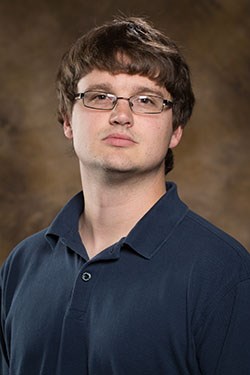Dec 22 2014
Physicists at the University of Arkansas have led an international team of scientists in a study to characterise the magnetic and electronic structure in transition metal oxides. These materials are used in a wide range of electronics applications.
 Derek Meyers, University of Arkansas.
Derek Meyers, University of Arkansas.
Transition metal oxides are artificially synthesized materials and this new study advances the basic understanding of these materials.
“Our study provides insight into what makes this group of very structurally similar materials behave in such disparate ways,” said Derek Meyers, a doctoral student in physics at the University of Arkansas.
He went on to say: “Most of the research on oxides in the last 20 years has focused on common transition metal oxides featuring iron, copper and cobalt. In this paper we analyzed more rare transition metal oxides containing rhodium and iridium. We are bridging the gap, allowing what we know about the abundant transition metal oxides to be translated to the less-studied variants.”
When the researchers changed the transition metal ions from cobalt to rhodium to iridium a Kondo effect emerged. Apart from this factor, these were identical chemical compounds. In condensed matter physics, the Kondo effect is an important concept that would help understand the behavior of metallic systems with electrons that interact strongly.
“We found the microscopic mechanism which causes significant changes to the electronic and magnetic behaviors as you move down different rows on the periodic table,” Meyers said.
The lead researcher of the study was Derek Meyers, a Doctoral Academy Fellow at the U of A. Jak Chakhalian, a professor of physics at the university and the director of the Laboratory for Artificial Quantum Materials supervised the study. Meyers analyzed the data along with Srimanta Middey, a postdoctoral research associate at the university.
The transition metal oxides for the study at Chakhalian’s lab were acquired from the Texas Materials Institute at the University of Texas in Austin. These oxides were acquired in partnership with John Goodenough, J.S. Zhou and J.G. Cheng, who is also with the Chinese Academy of Sciences.
A former physics doctoral student at the U of A, Benjamin Gray; Yongseong Choi, Daniel Haskel and John W. Freeland of the Advanced Photon Source at Argonne National Laboratory near Chicago; Yanwei Cao, a postdoctoral research associate in the Laboratory for Artificial Quantum Materials; and Tanusri Saha Dasgupta and Swarnakamal Mukherjee who are theorists from the S. N. Bose National Centre for Basic Sciences in Calcutta, India, were all part of the study.
The researchers have published their study as a paper titled “Competition between heavy fermion and Kondo interaction in isoelectronic A-site-ordered perovskites” in the online journal Nature Communications.